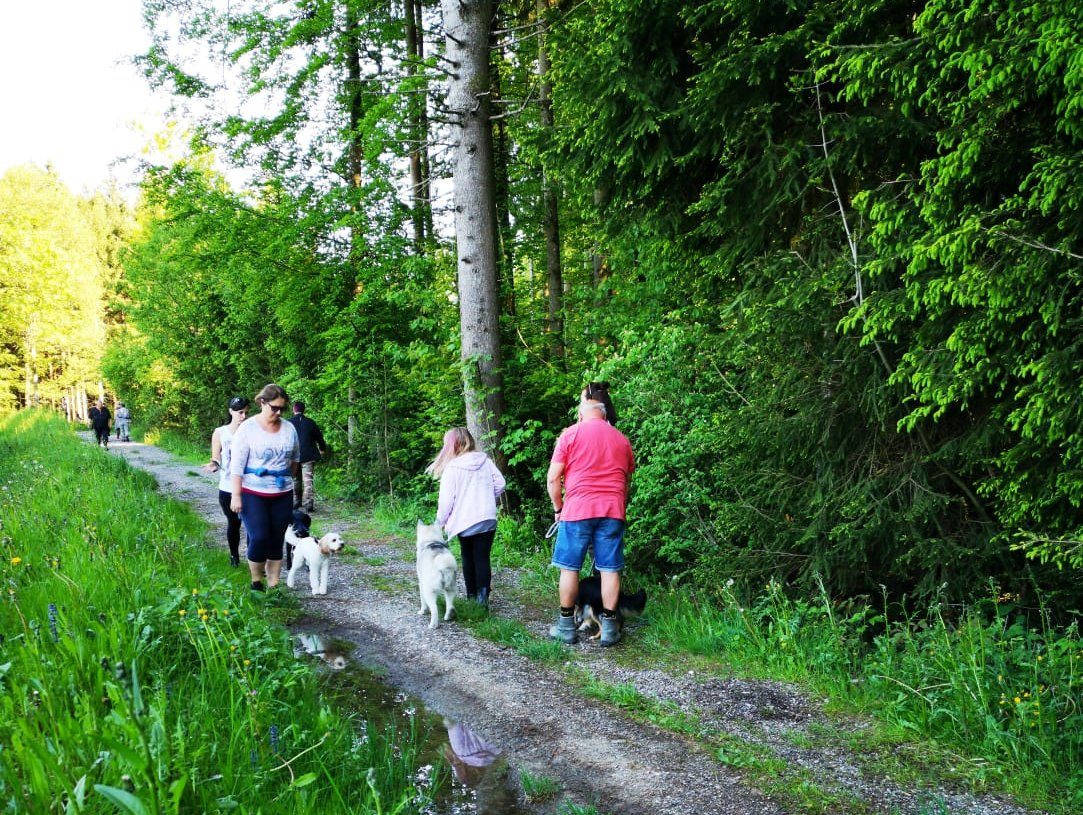The dog encounter
This word alone gives some dog owners goose bumps. I would even go so far as to say that eight out of ten dog owners have a problem when their dog meets another dog. Whether it is “wanting to play” or aggressive behavior, the range is wide. Many people wonder how to do it properly or how to get their dog past another four-legged friend.
Basically, you should know that dogs avoid each other in the wild and that it is only human wishful thinking that our “nice” dogs have to get to know each other. No one in the world would think of greeting every person they meet in a city. You would get strange looks after a short time. We have to let go of the idea that our “Waldi” thinks all other dogs are great. That is simply unnatural. Nevertheless, it MUST be possible to walk your dog past other dogs without any problems and without too much “fuss”.
So what is the solution?
It certainly doesn’t work like that:
Many people try to use motivation to get their already reactive dog past the other dog, regardless of whether it is barking, happy or pulling like a madman towards the other dog. Motivation in this case means: with food, play, praise or similar. Unfortunately, this tactic leads nowhere, why? In this situation, the other dog motivates the dog much more, be it to play or to fight. Giving counter-motivation – i.e. more motivation than the other dog – is simply not possible with a pronounced behavior. Even if one dog can be “lured” past the other with food, it is as if we were painting over a rust spot with paint, we are not fighting the cause. Because if you leave the food out, the dog will revert to its original behavior. The dog would also learn that it is rewarded with food when barking at other dogs.
So how do we go about it properly?
Prerequisite is a very good ability to walk on a leash! It should be possible to lead your dog in everyday life in such a way that you can hold the leash with two fingers, simply put, the leash should sag.
Now when you meet a dog, the most important thing is to look at your dog, and by that I mean keep your eyes on your dog and not on the other person. Many dog owners make the mistake of always looking at the other dog, how it reacts or what it does when they meet it, and don’t realize that their own four-legged friend is already reacting to the other dog. You think your dog’s reaction comes out of nowhere, but the dog has already started reacting five meters before.
A conflict in nature builds up in three stages:
- Eye contact
- Surface enlargement
- The bang
This means that we have to react as soon as we make eye contact. A car that starts to roll can still be stopped by humans in the first few centimeters. But not if it has already covered two meters. This is exactly how the dog encounter must take place. As soon as the dog starts to stare, I have to react.
The best way to correct the dog is up to you, but strong, dominant body language in combination with a training disk has proven to be very effective. You throw the disk – in combination with the body language – between the dog’s legs. In the worst case, you might hit the dog on the side, but it will survive, as long as it weighs over three kilos, I don’t see a problem. But it is usually enough to throw the disk between the dog’s legs. Furthermore, it is absolutely important to perform the entire action in silence. You must not forget about leash training. Many people see another dog and shorten the leash, so you get a taut leash and that causes forward drive. In doing so, we unconsciously reinforce the dog’s behavior. Only a loose leash guarantees us a controlled dog, even if this seems to defy all reason. Many people think that the short leash allows them to “feel” the dog better so that they can control it better.
However, if this does not work, it is advisable to get a dog trainer.
But here too, the rule of thumb is: always observe the trainer’s dog beforehand! This should be like a business card for the respective coach, but we’ll come to that another time.

